-
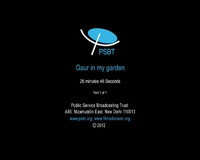 Gaur in My Garden
Gaur in My Garden
-
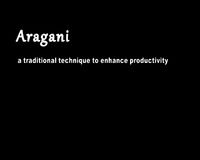 Aragani
Aragani
-
 Fragile Treasure
Fragile Treasure
-
 Drone Shot of the campus
Drone Shot of the campus
-
 Millets by Ida and Henrik
Millets by Ida and Henrik
-
 25th Year Celebration
25th Year Celebration
-
 Poster on Bikki
Poster on Bikki
-
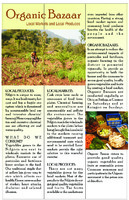 Organic Bazaar_Brochure
Organic Bazaar_Brochure
-
 Participatory Guarantee System_Brochure
Participatory Guarantee System_Brochure
-
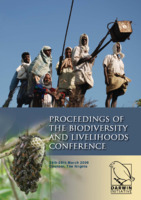 Book on proceedings of the biodiversity and livelihoods conference_ march 2009
Book on proceedings of the biodiversity and livelihoods conference_ march 2009
-
 The Little Things That Run the World
The Little Things That Run the World
-
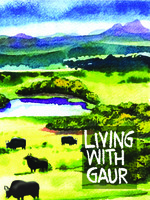 Living with Gaur
Living with Gaur
-
 Keystone Handbook on Honey Hunting
Keystone Handbook on Honey Hunting
-
 Adivasis and Livelihoods
Adivasis and Livelihoods
-
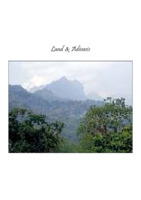 Land And Adivasis
Land And Adivasis
-
 Honey Hunters and Bee Keepers of Tamilnadu
Honey Hunters and Bee Keepers of Tamilnadu
-
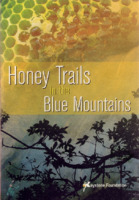 Honey Trails in the Blue Mountains
Honey Trails in the Blue Mountains
-
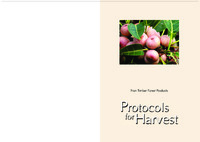 Protocols for Harvest
Protocols for Harvest This resource pack emphasizes sustainable harvesting practices for Non-Timber Forest Products (NTFPs) to balance conservation and livelihoods. It provides guidelines and methodologies for community-based ecological monitoring, incorporating ecological parameters, indigenous knowledge, and traditional practices.
-
 Forest plants of the Nilgiri's_Southern Nilgiri
Forest plants of the Nilgiri's_Southern Nilgiri The Forest plants of The Nilgiris_SouthrenNilgiri provides an overview of the Pillur Valley, located in the Nilgiris Biosphere Reserve, highlighting its diverse ecosystems, including dry deciduous forests, riparian forests, and grasslands, along with their unique plant species. It emphasizes the importance of wild edible tubers, rhizomes, and young shoots in the diets of indigenous communities, particularly the Irula people, who possess traditional knowledge about harvesting these resources sustainably. The document also acknowledges contributions from various individuals and organizations in ecological monitoring and expresses concern over the declining knowledge of plant uses among younger generations. Additionally, it aims to document and preserve local ecological knowledge while promoting awareness of the region's rich biodiversity and the need for its conservation.
-
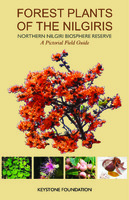 Forest plants of the Nilgiri's _ Northern Nilgiri
Forest plants of the Nilgiri's _ Northern Nilgiri The southern part of the Nilgiri Biosphere Reserve has a wide variation of flora ranging from the dry deciduous, riparian forest and grassland. The third in a five part series, this field guide covers the dominant plants of this zone.
-
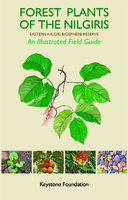 Forest plants of the Nilgiri's _ Eastern Nilgiri
Forest plants of the Nilgiri's _ Eastern Nilgiri The book contains primary work with adivasis or indigenous people of Nilgiris Eastern Slopes, the Kurumbas and the Irulas, especially those who have a special affinity to the forest. Years of work in the forests of the Nilgiris, vividly conveyed the high diversity of this region.
-
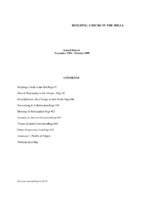 Annual Report_1994-1995
Annual Report_1994-1995 This resource contains an overview of activities taken up during the course of FY 1994-1995 at Keystone Foundation, inclusive of programmatic activities, finances and updates from the field centers.
-
 Semmanarai Seasonal Calender
Semmanarai Seasonal Calender
-
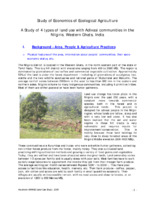 SANFEC-Keystone Report
SANFEC-Keystone Report This document examines agricultural practices and land use among indigenous communities in the Nilgiris region of India, focusing on the impacts of monoculture, particularly tea and coffee plantations, on biodiversity, soil health, and local economies. The study highlights the shift from traditional mixed agriculture to cash crops, which has led to increased reliance on chemical fertilizers and pesticides, negatively affecting soil quality and food security. It emphasizes the importance of promoting sustainable farming practices, such as intercropping and organic methods, to enhance food diversity and economic viability for local farmers. Additionally, the research includes detailed assessments of crop production, water sources, and social aspects of farming, aiming to document and compare the benefits of diverse agricultural systems against conventional practices.
-
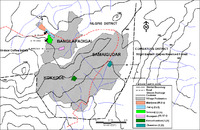 Sanfec Farmers Map
Sanfec Farmers Map
 Gaur in My Garden
Gaur in My Garden
 Aragani
Aragani
 Fragile Treasure
Fragile Treasure
 Drone Shot of the campus
Drone Shot of the campus
 Millets by Ida and Henrik
Millets by Ida and Henrik
 25th Year Celebration
25th Year Celebration
 Poster on Bikki
Poster on Bikki
 Organic Bazaar_Brochure
Organic Bazaar_Brochure
 Participatory Guarantee System_Brochure
Participatory Guarantee System_Brochure
 Book on proceedings of the biodiversity and livelihoods conference_ march 2009
Book on proceedings of the biodiversity and livelihoods conference_ march 2009
 The Little Things That Run the World
The Little Things That Run the World
 Living with Gaur
Living with Gaur
 Keystone Handbook on Honey Hunting
Keystone Handbook on Honey Hunting
 Adivasis and Livelihoods
Adivasis and Livelihoods
 Land And Adivasis
Land And Adivasis
 Honey Hunters and Bee Keepers of Tamilnadu
Honey Hunters and Bee Keepers of Tamilnadu
 Honey Trails in the Blue Mountains
Honey Trails in the Blue Mountains
 Protocols for Harvest This resource pack emphasizes sustainable harvesting practices for Non-Timber Forest Products (NTFPs) to balance conservation and livelihoods. It provides guidelines and methodologies for community-based ecological monitoring, incorporating ecological parameters, indigenous knowledge, and traditional practices.
Protocols for Harvest This resource pack emphasizes sustainable harvesting practices for Non-Timber Forest Products (NTFPs) to balance conservation and livelihoods. It provides guidelines and methodologies for community-based ecological monitoring, incorporating ecological parameters, indigenous knowledge, and traditional practices. Forest plants of the Nilgiri's_Southern Nilgiri The Forest plants of The Nilgiris_SouthrenNilgiri provides an overview of the Pillur Valley, located in the Nilgiris Biosphere Reserve, highlighting its diverse ecosystems, including dry deciduous forests, riparian forests, and grasslands, along with their unique plant species. It emphasizes the importance of wild edible tubers, rhizomes, and young shoots in the diets of indigenous communities, particularly the Irula people, who possess traditional knowledge about harvesting these resources sustainably. The document also acknowledges contributions from various individuals and organizations in ecological monitoring and expresses concern over the declining knowledge of plant uses among younger generations. Additionally, it aims to document and preserve local ecological knowledge while promoting awareness of the region's rich biodiversity and the need for its conservation.
Forest plants of the Nilgiri's_Southern Nilgiri The Forest plants of The Nilgiris_SouthrenNilgiri provides an overview of the Pillur Valley, located in the Nilgiris Biosphere Reserve, highlighting its diverse ecosystems, including dry deciduous forests, riparian forests, and grasslands, along with their unique plant species. It emphasizes the importance of wild edible tubers, rhizomes, and young shoots in the diets of indigenous communities, particularly the Irula people, who possess traditional knowledge about harvesting these resources sustainably. The document also acknowledges contributions from various individuals and organizations in ecological monitoring and expresses concern over the declining knowledge of plant uses among younger generations. Additionally, it aims to document and preserve local ecological knowledge while promoting awareness of the region's rich biodiversity and the need for its conservation. Forest plants of the Nilgiri's _ Northern Nilgiri The southern part of the Nilgiri Biosphere Reserve has a wide variation of flora ranging from the dry deciduous, riparian forest and grassland. The third in a five part series, this field guide covers the dominant plants of this zone.
Forest plants of the Nilgiri's _ Northern Nilgiri The southern part of the Nilgiri Biosphere Reserve has a wide variation of flora ranging from the dry deciduous, riparian forest and grassland. The third in a five part series, this field guide covers the dominant plants of this zone. Forest plants of the Nilgiri's _ Eastern Nilgiri The book contains primary work with adivasis or indigenous people of Nilgiris Eastern Slopes, the Kurumbas and the Irulas, especially those who have a special affinity to the forest. Years of work in the forests of the Nilgiris, vividly conveyed the high diversity of this region.
Forest plants of the Nilgiri's _ Eastern Nilgiri The book contains primary work with adivasis or indigenous people of Nilgiris Eastern Slopes, the Kurumbas and the Irulas, especially those who have a special affinity to the forest. Years of work in the forests of the Nilgiris, vividly conveyed the high diversity of this region. Annual Report_1994-1995 This resource contains an overview of activities taken up during the course of FY 1994-1995 at Keystone Foundation, inclusive of programmatic activities, finances and updates from the field centers.
Annual Report_1994-1995 This resource contains an overview of activities taken up during the course of FY 1994-1995 at Keystone Foundation, inclusive of programmatic activities, finances and updates from the field centers. Semmanarai Seasonal Calender
Semmanarai Seasonal Calender
 SANFEC-Keystone Report This document examines agricultural practices and land use among indigenous communities in the Nilgiris region of India, focusing on the impacts of monoculture, particularly tea and coffee plantations, on biodiversity, soil health, and local economies. The study highlights the shift from traditional mixed agriculture to cash crops, which has led to increased reliance on chemical fertilizers and pesticides, negatively affecting soil quality and food security. It emphasizes the importance of promoting sustainable farming practices, such as intercropping and organic methods, to enhance food diversity and economic viability for local farmers. Additionally, the research includes detailed assessments of crop production, water sources, and social aspects of farming, aiming to document and compare the benefits of diverse agricultural systems against conventional practices.
SANFEC-Keystone Report This document examines agricultural practices and land use among indigenous communities in the Nilgiris region of India, focusing on the impacts of monoculture, particularly tea and coffee plantations, on biodiversity, soil health, and local economies. The study highlights the shift from traditional mixed agriculture to cash crops, which has led to increased reliance on chemical fertilizers and pesticides, negatively affecting soil quality and food security. It emphasizes the importance of promoting sustainable farming practices, such as intercropping and organic methods, to enhance food diversity and economic viability for local farmers. Additionally, the research includes detailed assessments of crop production, water sources, and social aspects of farming, aiming to document and compare the benefits of diverse agricultural systems against conventional practices. Sanfec Farmers Map
Sanfec Farmers Map
